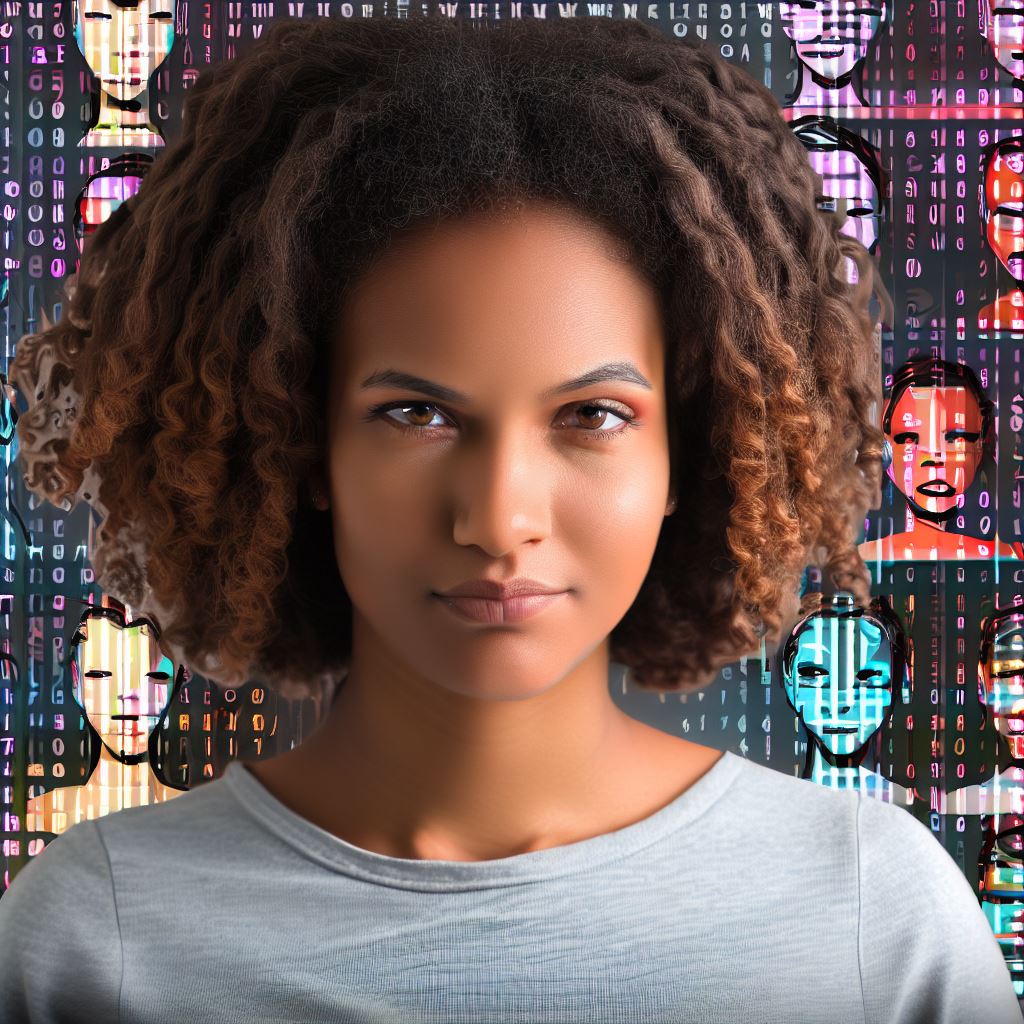Introduction
Diversity and inclusion initiatives in US coding schools play a crucial role in addressing the lack of representation and promoting equality.
By fostering a diverse and inclusive learning environment, coding schools can reap various benefits.
By actively seeking inclusivity, coding schools can create an atmosphere that encourages collaboration and innovation among students with different backgrounds and perspectives.
Research suggests that diversity fosters creativity and problem-solving abilities, leading to more inclusive and effective solutions.
Coding schools that prioritize diversity can improve their reputation and attract a broader pool of talented students.
Furthermore, representation matters. By having diverse faculty and staff, coding schools serve as role models for marginalized communities, inspiring the next generation of coders.
Inclusive initiatives also help address the gender gap in tech fields. Encouraging female participation in coding schools can bridge the gender divide and provide equal opportunities for all.
Diversity and inclusion initiatives contribute to a more well-rounded education by exposing students to different cultures, languages, and perspectives.
This prepares them for the global workforce as they learn how to collaborate with individuals from diverse backgrounds.
In summary, diversity and inclusion initiatives in US coding schools are vital for creating an equitable and enriching learning environment.
By embracing these initiatives, coding schools can foster creativity, attract a diverse talent pool, and inspire marginalized communities to pursue careers in tech.
Current State of Diversity and Inclusion in US Coding Schools
When it comes to diversity and inclusion, coding schools in the US still have a long way to go.
Let’s take a look at some disheartening statistics on the lack of diversity in these institutions, including gender and racial disparities.
Lack of Diversity in Coding Schools
- Only 26% of individuals attending coding schools are women, highlighting a significant gender disparity.
- Racial disparities also persist, with underrepresented groups such as Black, Latinx, and Indigenous individuals being underrepresented in coding schools.
- Less than 5% of coding school graduates identified as Black or African American in recent years.
- Asian students make up a considerable portion of coding school attendees, while other ethnic backgrounds remain largely underrepresented.
Challenges Faced by Underrepresented Groups
- Underrepresented groups face a significant challenge in accessing coding education due to limited resources and opportunities available to them.
- Financial barriers often pose a significant challenge, as coding schools can come with hefty tuition fees that may be unaffordable for individuals from marginalized communities.
- Stereotypes and biases may discourage underrepresented groups from pursuing coding education, leading to a lack of diversity within coding schools.
- Lack of representation and role models in the industry also contribute to the challenges faced by underrepresented groups, making it harder for them to envision themselves in the field.
The Need for Diversity and Inclusion Initiatives
The current state of diversity and inclusion in coding schools clearly highlights the need for initiatives that address these issues. Here’s why:
- Diversity fosters innovation and creativity, bringing a wide range of perspectives and experiences to the coding industry.
- Inclusive learning environments benefit all students, as they provide exposure to diverse perspectives, cultures, and problem-solving approaches.
- Empowering underrepresented groups by offering equal access to coding education can help bridge the equity gap in the tech industry.
- Diverse coding school graduates can contribute to a more diverse workforce, leading to greater representation and success for underrepresented individuals in the industry.
Implementing Diversity and inclusion
Diversity and inclusion initiatives can be implemented in various ways:
Tech Consulting Tailored to Your Coding Journey
Get expert guidance in coding with a personalized consultation. Receive unique, actionable insights delivered in 1-3 business days.
Get Started- Scholarship programs and financial aid can help overcome financial barriers and provide equal opportunities for individuals from marginalized communities.
- Creating mentorship programs that connect underrepresented students with industry professionals can provide valuable guidance and support.
- Collaborating with organizations that focus on promoting diversity in tech can help coding schools expand their reach to underrepresented groups.
- Revising admission processes by considering diverse backgrounds, experiences, and talents rather than relying solely on traditional qualifications can promote diversity in coding schools.
By actively working towards diversity and inclusion, coding schools can play a vital role in shaping an industry that is accessible and welcoming to all individuals, regardless of their gender, race, or background.

Importance of Diversity and Inclusion in Coding Schools
In today’s increasingly globalized and interconnected world, the importance of diversity and inclusion cannot be overstated.
This holds true for all industries, including the field of coding and programming.
Creating an environment that embraces diversity and fosters inclusion is crucial for the success and innovation of coding schools.
Enhancing the Learning Environment and Problem-Solving Skills
Diversity brings with it a multitude of perspectives, experiences, and ideas.
In coding schools, this diversity can greatly enhance the learning environment.
When students from different backgrounds come together, they bring unique insights and approaches to problem-solving.
This diversity of thought can lead to more creative and innovative solutions.
- By engaging with individuals from diverse backgrounds, students can learn to see problems from different angles.
- Working in a diverse team encourages collaboration and fosters open-mindedness, leading to better decision-making.
- Diverse coding teams can offer a wider range of skills, leading to a more comprehensive understanding of complex coding challenges.
Success Stories Resulting from Diverse Coding Teams
There are numerous examples of successful companies and products that have emerged from diverse coding teams.
These success stories serve as evidence of the power and potential that lies within diversity and inclusion.
- Google: The tech giant’s focus on diversity has spurred innovations like Google Translate and Maps, enhancing workforce representation.
- Microsoft: Microsoft’s diversity and inclusion initiatives have yielded positive outcomes as their diverse coding teams contributed to the success of products like Microsoft Office and Azure.
- Amazon: Amazon’s promotion of diversity and inclusion has fueled innovation and disruption in multiple sectors, evident in its success in e-commerce, cloud computing, and artificial intelligence.
These success stories highlight that diversity and inclusion can drive innovation and create products that cater to a wide range of users.
In essence, diversity and inclusion initiatives in coding schools are of paramount importance.
Embracing diversity and fostering inclusion in coding schools creates a collaborative learning environment, enhancing problem-solving skills. This, in turn, drives groundbreaking innovations.
The success stories of companies like Google, Microsoft, and Amazon further underscore the value of diverse coding teams.
Build Your Vision, Perfectly Tailored
Get a custom-built website or application that matches your vision and needs. Stand out from the crowd with a solution designed just for you—professional, scalable, and seamless.
Get StartedIt is imperative that coding schools continue to prioritize diversity and inclusion to ensure a successful and innovative future for the field of coding.
Read: A Beginner’s Guide to Coding: First Steps to Get Started
Diversity and Inclusion Initiatives in US Coding Schools
Coding schools in the United States have taken significant steps to promote diversity and inclusion in their programs.
By implementing various initiatives, these schools are striving to create a more inclusive and accessible environment for students from underrepresented groups.
Below are some of the initiatives they have adopted:
Scholarship and Financial Aid Programs
Many coding schools have established scholarship and financial aid programs to support individuals from underrepresented communities.
These programs aim to reduce financial barriers and provide opportunities for those who may not have the means to enroll in coding courses.
Scholarships and financial aid help diversify the student body and create a more inclusive learning environment.
Some coding schools collaborate with external organizations or corporate sponsors to fund these initiatives, ensuring that financial assistance is available to a wider range of individuals.
By providing scholarships and financial aid, coding schools are actively working towards bridging the gap and making coding education accessible to all.
Mentorship Programs
Coding schools understand the significance of mentorship in supporting underrepresented students.
They have implemented mentorship programs where experienced professionals or alumni guide and support students throughout their coding journey.
Mentorship programs play a crucial role in ensuring that students from underrepresented communities receive consistent guidance and support.
Mentors provide valuable insights, advice, and encouragement, helping students navigate any challenges they may face in their coding education.
Optimize Your Profile, Get Noticed
Make your resume and LinkedIn stand out to employers with a profile that highlights your technical skills and project experience. Elevate your career with a polished and professional presence.
Get NoticedThese programs create a sense of belonging and empower students to succeed.
Partnerships with Diversity-Focused Organizations
Coding schools actively engage in partnerships with organizations or companies that promote diversity and inclusion.
These partnerships enable coding schools to tap into a larger network of resources and expertise dedicated to fostering a more inclusive environment.
By collaborating with diversity-focused organizations, coding schools gain access to tailored resources, training programs, and networking opportunities for their students.
These partnerships not only enhance the educational experience but also provide students with connections and industry exposure, ultimately improving their chances of success in the tech industry.
Creating Safe and Inclusive Spaces
Coding schools strive to create safe and inclusive spaces for all students. They have adopted policies and practices that prioritize diversity, equity, and inclusion.
By cultivating a culture of respect and empathy, coding schools ensure that all students feel valued and supported.
They actively discourage discrimination and create avenues for students to report any instances of bias or harassment.
Inclusion initiatives also involve incorporating diverse perspectives into the curriculum, organizing diversity and cultural awareness events, and fostering a sense of community among students.
Basically, coding schools in the US are taking proactive steps to promote diversity and inclusion within their programs.
Through scholarships, financial aid, mentorship programs, partnerships with diversity-focused organizations, and safe, inclusive spaces, these schools actively promote equitable access for underrepresented students.
As the tech industry continues to evolve, it is crucial for coding schools to lead the way in fostering diversity and inclusion.
Read: The Future of Learning: What’s Next for Coding Schools?
Best Practices and Success Stories
- Coding Bootcamp CareerFoundry has successfully implemented diversity and inclusion initiatives, resulting in a more diverse student body.
- By offering scholarships and outreach programs targeting underrepresented groups, Coding Bootcamp Coding Dojo has achieved a diverse cohort.
- Code School App Academy actively promotes diversity by organizing events and workshops focused on underrepresented communities.
Impact on Students’ Learning Experiences and Career Outcomes
- Diversity and inclusion initiatives in coding schools create a welcoming environment for students from different backgrounds.
- By fostering diversity, coding schools enhance collaboration, teamwork, and cross-cultural communication among students.
- Students exposed to diverse perspectives and experiences through these initiatives develop more well-rounded problem-solving skills.
- Career outcomes for students who have participated in inclusive coding schools show higher job placement rates and greater job satisfaction.
Innovative Strategies and Unique Approaches
- Coding Bootcamp CareerFoundry provides personalized mentorship programs that support students from underrepresented groups throughout their coding journey.
- Code School Coding Dojo implements a buddy system, pairing new students from diverse backgrounds with more experienced peers.
- Coding Bootcamp App Academy incorporates diversity and inclusion training within its curriculum to raise awareness and promote understanding among students.
- By partnering with local organizations, Coding Bootcamp Hack Reactor expands access to coding education for traditionally marginalized communities.
Diversity and inclusion initiatives in coding schools profoundly impact student learning and career outcomes. These schools create empowering environments.
They increase underrepresented group representation and cultivate inclusive cultures. Diverse student interactions enrich the learning experience.
Exposure to varied perspectives sharpens problem-solving skills, vital in the tech industry. These initiatives positively affect students’ career paths.
Scholarships and outreach programs level the tech workforce playing field. Partnerships with local organizations expand coding education access.
Success stories reveal innovative strategies. Personalized mentorship, like at Coding Bootcamp CareerFoundry, supports diverse students facing unique challenges.
Buddy systems, as at Code School Coding Dojo, nurture peer support and belonging. Curriculum-based diversity training, as in Coding Bootcamp App Academy, enhances collaboration skills.
In summary, coding schools promoting diversity and inclusion drive equitable opportunities, improve learning, and enhance careers for students.
Read: Incorporating Coding in School Curricula: The U.S. Perspective
See Related Content: 10 Best Practices for CodeIgniter Development
Challenges and Limitations
Implementing and sustaining diversity and inclusion initiatives in coding schools comes with its fair share of challenges.
Resistance and pushback from within the coding school community can pose a significant barrier to these initiatives.
One of the challenges is the lack of diverse representation among coding school staff and instructors.
Another challenge is addressing unconscious bias and stereotypes that may exist within the coding school community.
Limited resources and funding can also limit the scope and effectiveness of diversity and inclusion initiatives.
Existing initiatives may face limitations such as a lack of accountability and measurable outcomes to track progress.
Potential Barriers and Resistance
Resistance within the coding school community can stem from a fear of change or a belief that diversity initiatives compromise meritocracy.
Some may argue that diversity and inclusion initiatives prioritize certain groups over others, leading to backlash.
Resistance can also come from the belief that addressing diversity and inclusion is not necessary or irrelevant to coding education.
Institutional resistance may occur when implementing new policies or practices challenging the existing status quo.
There may be a lack of buy-in from coding school leadership, further hindering the progress of diversity and inclusion initiatives.
Evaluating Limitations and Areas for Improvement
Existing diversity and inclusion initiatives need to be evaluated to identify their limitations and areas for improvement.
One limitation is the focus on recruitment and initial access, which may not address long-term inclusion and retention.
Measuring outcomes and progress is crucial for identifying areas for improvement and enhancing accountability.
Collaboration with industry partners and organizations can help overcome resource limitations and enhance the impact of initiatives.
Continuous professional development and training programs can address unconscious bias and create a more inclusive coding school environment.
Engaging with students and alumni from diverse backgrounds can provide valuable insights for improving initiatives.
Read: Coding Dojo Success Stories: Where Are Graduates Now?
Conclusion
Diversity and inclusion are crucial in coding education as they foster creativity and innovation.
By embracing different perspectives and experiences, coding schools can create a more inclusive and supportive learning environment.
However, there is still a long way to go to improve diversity and inclusion in coding schools.
Ongoing efforts are needed to combat biases, promote equal opportunities, and provide support to underrepresented groups.
To make a difference, it is important for readers to support and advocate for diversity and inclusion initiatives in their own communities or organizations.
By actively promoting these values, we can create a more inclusive and diverse coding industry that benefits everyone involved.
Let us stand together and champion diversity and inclusion in coding education, ensuring that opportunities in this field are open to individuals from all backgrounds and walks of life.
Through collective action, we can truly make a positive impact and change the face of coding schools for the better.



